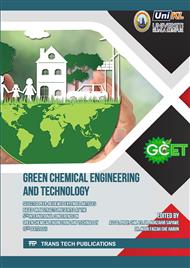p.141
p.151
p.163
p.171
p.177
p.183
p.189
p.201
p.209
Optimization Fungal Leaching of Cobalt and Lithium from Spent Li-Ion Batteries Using Waste Spices Candlenut
Abstract:
Lithium-ion battery (LIB) applications in consumer electronics nowdays are rapidly growing resulting the increase of batteries solid waste containing toxic and corrosive substances for the environment. On the other hand, the main active cathode components in LIB are Lithium and Cobalt, which are hazardous and limited in nature but are valuable metals. This study aims to use bio-hydrometallurgical techniques to recover heavy metals from LIB using microorganisms to avoid toxic waste from used solvents which are usually generated in conventional chemical leaching. Filamentous fungi have an important role in secreting citric acid and several organic acids to facilitate the dissolution of metal ions from the metal solids. Self-grown fungi, Aspergillus niger isolated from waste spices (Candlenut) was used as a leaching agent. Route based on fungal activity was evaluated to optimized the detoxification and metal recovery from spent LIB in various conditions (one-step, two-step and spent medium bioleaching) in 21 days of incubation. The quantitative result of XRF and EDX analysis of battery powder before and after bioleaching confirm that fungal activities are quite effective. The maximum recovery of both metals (Cobalt and Lithium) in leached liquor reached up to 72% analyzed using ICP-OES with the one-step leaching method. With respect due to the high metal recovery, fungal leaching has proven to be an easy and cost-effective green metallurgical method for recycling heavy metals in used LIBs.
Info:
Periodical:
Pages:
177-182
Citation:
Online since:
December 2022
Keywords:
Price:
Сopyright:
© 2022 Trans Tech Publications Ltd. All Rights Reserved
Share:
Citation:



